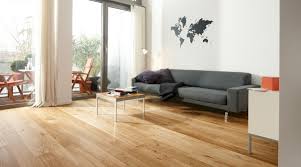
Creating a Cozy Ambiance with Wooden Flooring
Selecting the ideal wooden floor (drevená podlaha) in your residence can transform a space, adding personality and warmth. But, it’s more than aesthetics alone; it is a careful assessment of your needs, lifestyle and choices. Here’s a guide to help you select the right wooden floor for your needs and lifestyle.
1. Understand Wood Types
Wooden floors come in various varieties, but the most popular are softwood and hardwood. Hardwood, including oak, maple, and cherry, is long-lasting and suitable for high-traffic areas. Softwoods like pine and fir are more flexible and can dent more easily, which makes them more suitable for less-traffic areas. Each type has distinct characteristics. Understanding these characteristics will allow you to choose the right one that best suits your needs.
2. Consider Wood Finishes
The finish of the wood will affect its durability as well as maintenance. There are two types of finishes that are available: polyurethane and oil-based finishes. The oil-based finishes penetrate the wood, improving its natural look but requiring regular maintenance. Polyurethane finishes form a protective layer over top of the wood, providing greater durability and ease of cleaning. Choose a finish that aligns with your maintenance preferences and lifestyle needs.
3. Evaluate Traffic Levels
High-traffic areas like hallways, kitchens, and living rooms require more durable wood. Hardwoods such as oak and hickory are ideal for these spaces due to their resistance to wear and wear and tear. For rooms with less traffic or frequented by visitors, soft woods or engineered wood might suffice. Examine the amount of activity within each room to determine the most suitable wood type.
4. Climate Considerations
The climate of your area can affect wooden flooring. In humid climates, wood may expand and contract, so opt for the engineered wood option or a finish that is moisture-resistant. When it is dry outside, timber can shrink, so consider a finish that accommodates this shift. Be sure to choose a finish that is suitable for your home’s climate to prevent potential problems.
5. Maintenance and Upkeep
Wooden floors require regular maintenance to keep their beautiful. Certain woods are more prone to damage and scratches which is why if you have children or pets, you should choose an extra sturdy finish or a wood type. Regular vacuuming, cleaning and occasionally refinishing are vital to ensure that your floors are in good shape.
6. Aesthetic Preferences
The visual appeal of wooden floors can vary widely. Consider the grain pattern, color and texture that will best fit your home’s style. Woods with lighter shades like ash and maple give a light, airy feel, while darker woods like walnut and mahogany provide warmth and richness. Choose a style that complements your decor and personal taste.
7. Budget Considerations
Wooden floors come in a range of price points. The solid hardwood flooring is usually more expensive than engineered wood or laminate. Consider both the initial cost as well as the long-term maintenance costs when determining your budget. Investing in quality flooring may provide better durability and attractiveness in the long run.
Selecting the right wooden floor involves balancing aesthetics, functionality, and maintenance. If you know the various kinds of wood, finishes, and lifestyle needs to make an informed decision that enhances your home and fits your lifestyle.